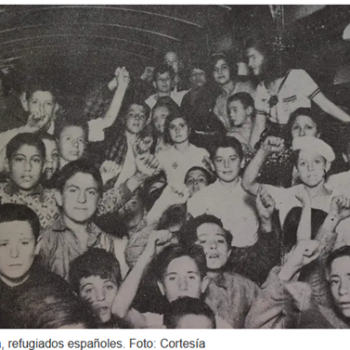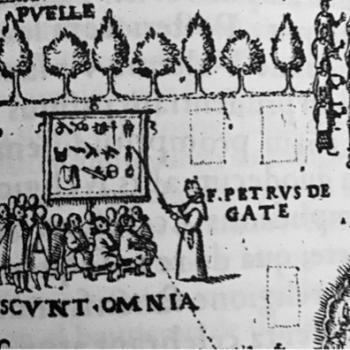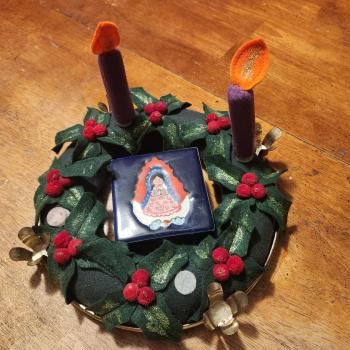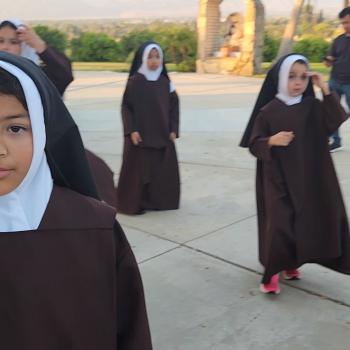In our season of tumult, grief, and new hope, the film Pieces of a Woman, released on Netflix this month, strikes notes both disturbing and timely. One reviewer asks, on the film’s central question, “can anything be gained by making someone pay for an irretrievable loss?” Based partly on the experience of filmmakers Kornél Mundruczó and Kata Wéber, Pieces’ most noteworthy feature is the single-shot 24-minute scene of the character Martha’s (Vanessa Kirby) home birth, which ends with the death of her infant daughter. The way Martha and her husband Sean (Shia LeBeouf) grieve is so disparate as to drive the couple apart. Martha’s mother Elizabeth (Ellen Burstyn) thinks healing will come only with justice done—that is, punishing the midwife who attended Martha’s delivery. Spoiler alerts hardly pertain, as the film’s trailer reveals all this. Reviews roundly assess the movie as a chronicle of grief and loss, what happens after a baby’s death rather than the thing itself.
It’s a strange way to frame an emotionally charged story: midwife-attended home birth gone wrong. Were it common for men and women in America to welcome a baby at home, screen presentation of it would require no more explanation than would a kindergarten scene opened by the arrival of a school bus. But in the US midwife-attended births are rare, growing in prevalence but still under 10%. Home births even rarer, around 1% annually, though Covid boosted interest in birthing at home. Nowhere around the long and dramatic birth scene does the film explain why this couple chose to have the baby at home, how they prepared for it, what each member of the couple had at stake, or how they weathered outside pressure about their decision. The birth itself epiphenomenal, something that happens in the film on the way to grief.
Scanting the couple’s explanation of why they chose the home birth risks impugning it, endorsing the caricature of home birth that arises near the film’s end in a heavy-handed courtroom scene. There a lawyer voices common complaints against home birth as the selfish choice of a woman interested in a particular kind of experience gotten at the cost of her child’s safety, which would be better secured in a hospital. The film makes this Martha’s only scripted moment to defend the decision to deliver at home, and she accords agency to the baby, saying she wanted her daughter to come when she was ready. Unusually for an American woman choosing home birth, she does not offer her own justification for it or for choosing a midwife.
Pieces misses opportunity to explore powerful reasons for these choices. For her book, Blessed Events: Religion and Homebirth in America, Pamela Klassen interviews diverse women interested in home birth for reasons best described as spiritual or religious. Evangelical women appear in Klassen’s account but also Old Order Amish, women belonging Reform Judaism, or mothers-to-be revering goddesses. These women construct the meaning of birth in spiritual terms, prefer the way home accommodates spiritual expression better than hospital protocols would. Many reasons besides spirituality shape choice of a birth location, but religion’s utter absence is from the birth scene and aftermath is conspicuous.
Pieces also misses opportunity to address the importance of midwifery, statistically limited but resurgent in the United States. By giving the midwife Eva no voice after the initial birth scene, the film leaves open implications that she may have been negligent or incompetent, even though neither Martha nor Sean thinks the baby’s death was Eva’s fault. As the work of Barbara Katz Rothman and others demonstrate, American midwives practice with distinctive skill and expertise, handling births at least as safely as obstetricians do.
Grief not only pushes Martha and Sean apart, it pushes them away from others. The rarity of her misfortune makes Martha strange to family and friends. It is a privilege and progress to perceive the death of a child as unthinkable. Here Pieces intersects the concerns of the new book by Perri Klass, A Good Time to Be Born: How Science and Public Health Gave Children a Future. The title offers simultaneous reality checks and irony. “Good time” may not seem the best description of parenting now. But even now we can make edifying contrast to a century ago when infant mortality and childhood death from infectious disease was common, rich and poor alike aware that childhood was perilous. Klass chronicles how food safety, antibiotics, and vaccines defeated many perils of youth. With increased safety, though, came shift in parental assumptions. Parents went from recognizing that danger lurked on all sides to deeming any childhood harm unthinkable. We assume babies survive birth, assume our children will not succumb to tuberculosis, diphtheria, or scarlet fever. But children still are prone to dangers parents can neither explain nor prevent. And, as Pieces illustrates, that grief can be fiercely isolating.
Pieces also misses opportunity to address birth and death as necessarily spiritual and communal as well as physical and private. Religion appears only briefly on screen in Elizabeth’s recollection of Holocaust survival and a relative’s sermon reference to time healing wounds. The film’s characters insist on the right to determine the shape of their own private mourning, mostly Martha’s. To her mother’s plea that “We need some justice here,” Martha retorts, “No, you need.” When Martha refuses a burial, scorns a headstone, and strips the nursery, Sean asks why she is “trying to disappear my kid,” and she replies, “Because we don’t have a kid.” The viewer may be bidden to respect her mourning, its raw pain and unconformity to manners trying to smooth it over. Hope does come. Martha finds her own way to healing through apples, which remind her of the scent of her daughter, and the film ends gauzily with a blonde child climbing an Edenic apple tree to eat its fruit.
But we view the film in a particular time and place, amidst an ongoing pandemic. If this is a film about loss rather than birth, a “history of grief,” we may want to interpret it for our moment, apart from the circumstances of perinatal loss. Unity is nowhere to be found in Pieces of a Woman. Bringing the film to address the 2020 rallying cry of Covid opposition—We’re All in This Together!— should jar the viewer in two ways. On one hand, it reminds us that our experiences of loss, including Covid losses, are quite disparate and we feel them differently, despite promises of easy solidarity. On the other hand, as we seek hope, the breadth of our common losses in 2020-2021 remind us that loss is rarely only private, that others share it and we need others to bear it.













